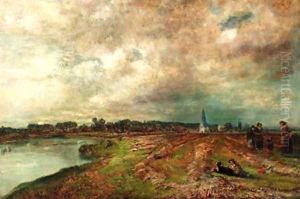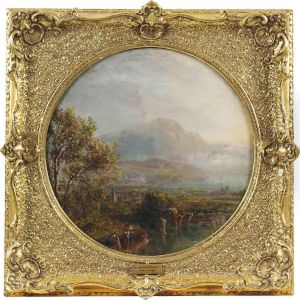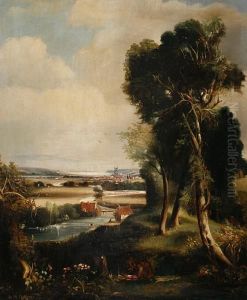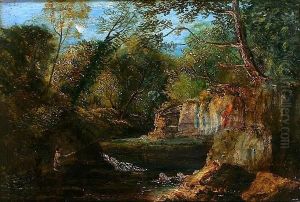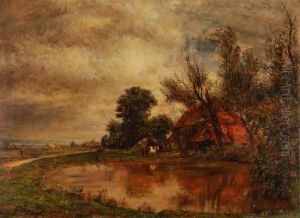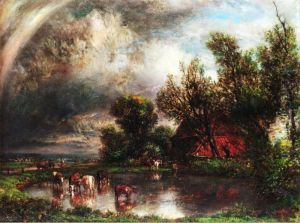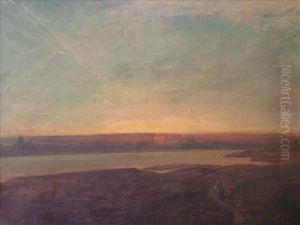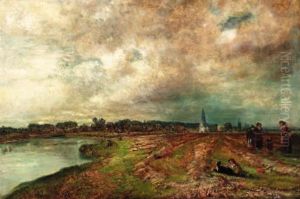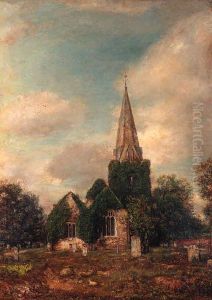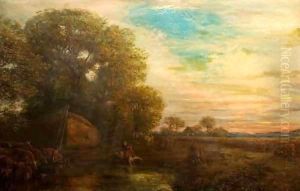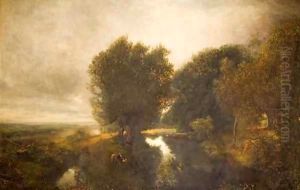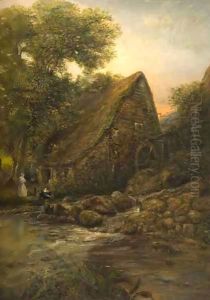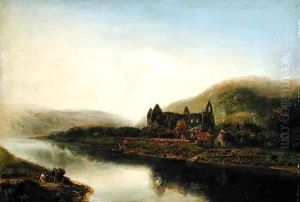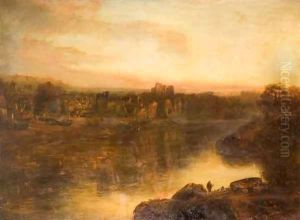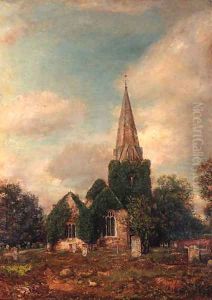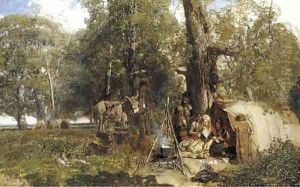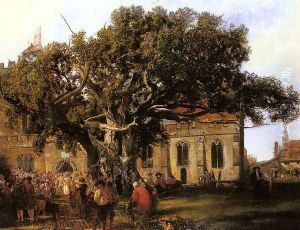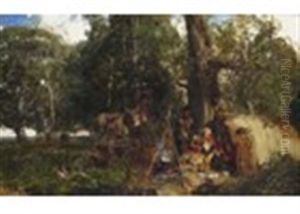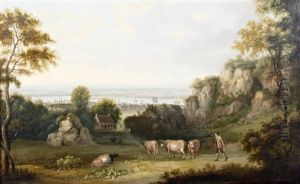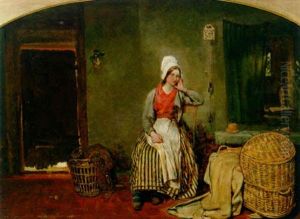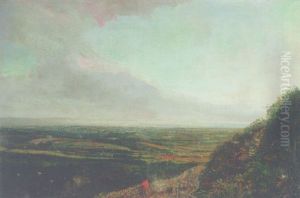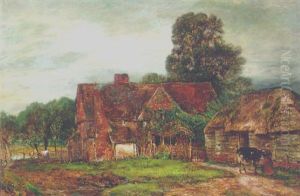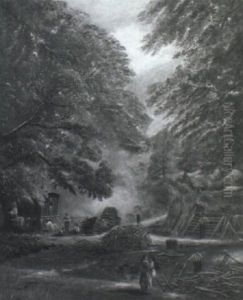Henry Mark Anthony Paintings
Henry Mark Anthony was a prominent British landscape painter born in 1817, whose work is often associated with the Pre-Raphaelite movement, although he was not formally a member of the brotherhood. His paintings are known for their meticulous attention to naturalistic detail, a characteristic that aligns with the Pre-Raphaelite ethos of truth to nature. Anthony received his artistic training at the Royal Academy in London, where he was greatly influenced by the works of John Constable, among others. This influence is evident in Anthony's focus on the British countryside, capturing its various moods and settings with a remarkable fidelity to appearance.
Throughout his career, Anthony exhibited a deep reverence for nature, often imbuing his landscapes with a sense of tranquility and timeless beauty. His technique was characterized by a delicate handling of light and color, which allowed him to achieve a high level of realism and atmospheric effect. Anthony's landscapes were not just representations of specific locations but also meditations on the spiritual qualities of nature, an approach that resonated with the Victorian era's fascination with the natural world as a source of moral and aesthetic inspiration.
Anthony exhibited regularly at the Royal Academy from 1837 onwards, and his works were also shown at the British Institution and the Royal Society of British Artists. Despite his association with the Pre-Raphaelites, Anthony maintained a distinct personal style that set his work apart from that of his contemporaries. He was particularly admired for his ability to depict the lushness of the English landscape, a talent that earned him a dedicated following during his lifetime.
Later in his career, Anthony's work began to reflect the influence of the Aesthetic Movement, which emphasized beauty and design over moral or narrative content. This shift can be seen in the more evocative, less detailed landscapes he produced in his later years, which prioritize mood and atmosphere over precise topographical accuracy.
Henry Mark Anthony passed away in 1886, leaving behind a rich legacy of landscape paintings that continue to be appreciated for their beauty and technical mastery. His work represents a bridge between the Romantic tradition of landscape painting and the more modern approaches that would emerge in the late 19th and early 20th centuries. Today, Anthony's paintings can be found in many public and private collections, testament to his enduring appeal and significance in the history of British art.
